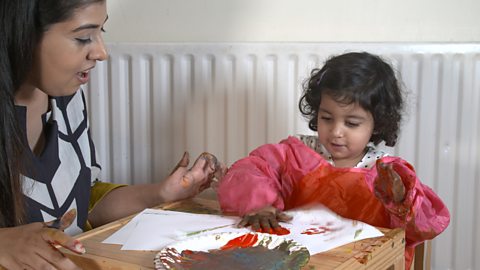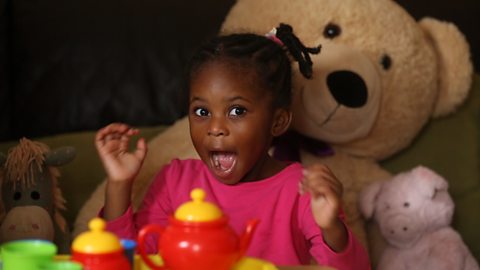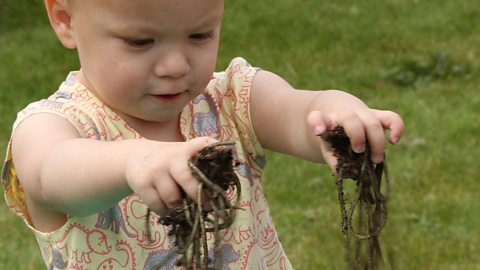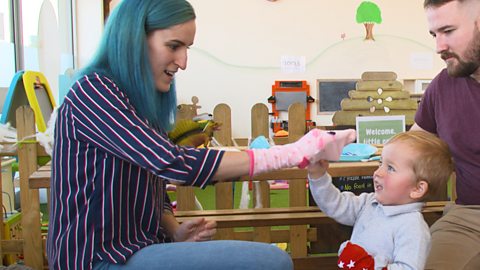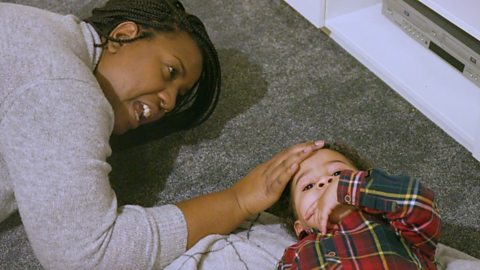Drawing faces is a great way to get your little one talking about different emotions.
The video below has loads of ideas on how you can make the most of drawing faces together with your child. Why not give it a watch and have a go at home?
Encourage your child to describe each facial feature and then draw it.
Why should you draw with your toddler?
You might have noticed that your toddler has had an interest in using a pen and scribbling from as young as 12-months-old. There are loads of benefits of drawing together from this young age:
- Drawing supports muscle and hand-eye coordination
- It's a great opportunity to talk and teach them about colours
- It can help children express their emotions
- Drawing encourages problem-solving, by getting children to ask themselves questions
Even if you don't think you're creative, getting crafty with your child can have loads of benefits. That includes drawing!
How to help children understand emotions
As well as helping children express their emotions, drawing faces together can also help your toddlers learn about different emotions and what they mean.
You could try making faces together first and then try drawing the faces you make.
Why not try doing a quiz, where you draw a face and get your child to guess what face you've drawn. Or vice versa. Taking charge and being the quizmaster can help nervous and quiet children with their learning.
If your child is older, you can help them unpick these different emotions and help them understand what to do if they feel them.
You could say: âWhen I feel sad I find going outside cheers me up.â By doing this, youâre giving your child the skill to know how to make themselves feel better.
Find out more about why imaginative play is so great for your child.
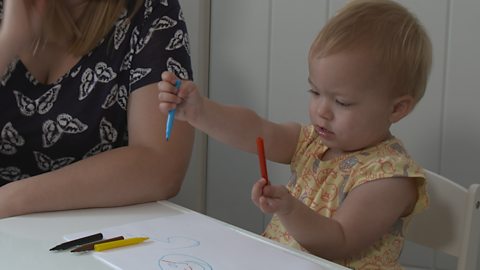
Image caption, You can provide different coloured pens or pencils and ask your toddler to draw different faces.
1 of 3

